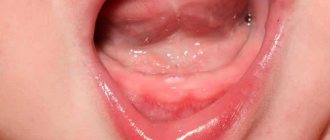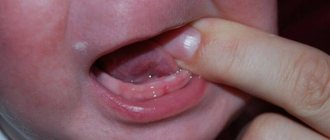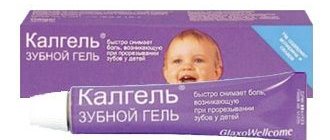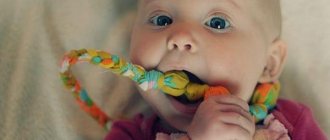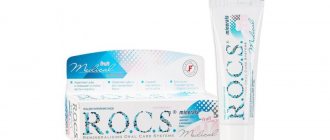The article is for informational purposes only and is not a purchase guide. Before purchasing, consultation with a doctor is required. There are contraindications.
The appearance of a baby’s first teeth is a painful process. To reduce pain, relieve swelling and inflammation, manufacturers offer the best baby gels that make teething easier.
[Show]
How to choose a gel for teething
To relieve the sharp pain that worries a child when teeth appear, drugs with anesthetics are used. Their effectiveness directly depends on the number of active components in the composition. Local anesthesia is most often represented by lidocaine or benzocaine. Such freezing is dangerous for babies, as it can cause numbness of the tongue and problems with breastfeeding. In addition, you must strictly follow the instructions for using such drugs, since an overdose of these drugs causes many adverse reactions.
Herbal gels provide a longer-lasting effect than quick freezing with anesthetics, but they do not cope with acute pain. Such preparations are suitable for long-term use for swollen gums that only slightly bother the baby.
If teeth appear early, it is better to give preference to natural remedies - they are allowed from 3 months of age.
Antiseptic gels stop the development of microorganisms in the oral cavity and eliminate gum inflammation. These products are most often based on the action of choline salicylate or cetalkonium chloride, in addition to which anise oil may be included. Such drugs are given in strictly limited quantities and are recommended for children at least 1 year old.
Recommendations: 13 Best Teethers for Teething
14 Best Whitening Toothpastes
8 best creams for fixing dentures
"Mundizal"
Based on Choline salicylate. With menthol and anise oil. Sugarless. It is quickly absorbed into the gums and acts instantly. It has anti-inflammatory, pronounced analgesic, antimicrobial and antifungal, and antipyretic effects. After applying the gel, the effect lasts up to eight hours.
The gel is used before meals. A strip of the product, 5 mm long, is rubbed into the child’s gums 3 or 4 times a day. A burning sensation may occur, but is not a side effect.
- Anesthetic gel for teeth
"Mundizal"
The gel should not be used if the child is allergic to the active ingredient, has bronchial asthma or has problems with the circulatory system. Side effects manifest themselves in the form of swelling of the mucous membrane, redness, and irritation.
Important! The gel should be used for children under one year of age with caution and after consultation with a pediatrician.
The best pain relief gels for teething
Gels with the effect of local anesthesia are designed to relieve acute pain: the pain goes away almost instantly, but the result is short-lived. After 20-30 minutes, the teeth may begin to bother the baby again.
Akrikhin Lident Baby - domestic dental anesthetic gel
5.0
★★★★★
editorial assessment
92%
buyers recommend this product
The Russian drug Akrikhin Lident Baby appeared on the market quite recently, but immediately won the love of customers. The analgesic effect is achieved by containing lidocaine in a minimum concentration of 0.33%. This allows the drug to be used from 3 months. It blocks nerve impulses, so the child calms down immediately after application.
Chamomile extract acts as an antiseptic and soothes sore gums. Cetylpyridinium gives the product bactericidal properties, preventing numerous gum diseases. The gel texture allows the product to stay on the mucous membrane longer and thereby increase the pharmacological effect.
The drug is sold in sealed metal tubes of 5 or 10 g. The sweetish taste attracts most children, so there are no problems with application.
Pros:
- effective pain relief;
- safe for babies over 3 months;
- anti-inflammatory effect;
- has no side effects;
- pleasant taste.
Minuses:
- uneconomical.
Due to the low lidocaine content, Akrikhin Lident Baby can be applied every 3-4 hours.
Dentol baby - instant pain relief
4.8
★★★★★
editorial assessment
87%
buyers recommend this product
See review▶
Dentol Baby is a remedy for relieving severe pain during teething. It is also used for aphthous stomatitis or toothache in children and adults. The drug is sold in convenient plastic tubes with a long spout. The narrow opening allows you to squeeze out just a little gel.
The effect occurs within one minute: the gums calm down and stop feeling pain. The effect of the drug lasts for 15-20 minutes. During this time, the acute pain usually has time to subside. After absorption, the product is well broken down and excreted from the body along with other metabolic products.
Pros:
- convenient packaging;
- quick freezing;
- economical consumption;
- safe breakdown and removal from the body.
Minuses:
- short analgesic effect;
- has contraindications and side effects;
- the price is above average (about 250 rubles per 10 g).
Dentol Baby is approved for use by children over 4 months old, but you must strictly follow the dosages indicated in the instructions: it is permissible to apply the product no more than 4 times a day. The course of application is no longer than 7 days.
READ ALSO
10 best medicated toothpastes
Pansoral
With a dental gel like Pansoral, relief comes quickly. It soothes gum tissue with medicinal plant extracts. This product is natural and has a mild effect. It does not have a pronounced effect in eliminating pain. Characteristics:
- Consists of healing extracts of plants such as saffron and chamomile with the addition of marshmallow root.
- A number of additional ingredients have a soothing effect on inflamed areas of the gums.
- The drug is used when the pain is not severe.
The ointment is applied in small portions and rubbed into the mucous membranes with massaging movements. The drug is approved for use from 4 months of age. Manufacturer: French. In addition to the anti-inflammatory effect, the gel can have an antiseptic effect. Thanks to marshmallow extract, a protective film appears on the gums. This speeds up the tissue repair process. Regular use of this product gives good results. Overdose is excluded.
The best anti-inflammatory gels to make teething easier
Antiseptic gels have a prolonged effect because they penetrate deeply into soft tissues. They relieve all signs of inflammation: swelling, itching, burning, pain, thereby facilitating teething in babies.
Valeant "Cholisal" - antiseptic gel with analgesic effect
5.0
★★★★★
editorial assessment
93%
buyers recommend this product
Valeant Cholisal is designed to relieve inflammation and treat infectious diseases of the oral cavity. Due to its pronounced antiseptic properties, it is often used to facilitate teething in babies. The drug is available in pharmacies without a prescription. The use of Valeant Cholisal is permitted for children over one year of age. To clarify the duration of treatment, it is better to consult a pediatrician.
The Cholisal formula is effective thanks to 2 active ingredients. Choline salicylate has an anti-inflammatory effect and acts as a local anesthetic. Cetalkonium chloride is an antiseptic that destroys bacteria, microbes and fungi, preventing the development of infectious diseases in the oral cavity.
The thick gel consistency allows the product to linger longer on the mucous membrane, prolonging the effect of the active substances. The cutting goes away within 2-3 minutes after application, the effect lasts for 2-8 hours - depending on the intensity of the pain. The manufacturer recommends using Valeant Cholisal 2-3 times a day. To apply, a pea-sized amount of the product is enough - it must be thoroughly rubbed into the affected area of the gum.
Pros:
- rapid pain relief;
- relieves gum inflammation;
- prevention of infectious diseases;
- long lasting effect;
- Available in most pharmacies.
Minuses:
- not recommended for use up to 1 year;
- contains alcohol.
It is inconvenient to give Valeant Cholisal to babies because alcohol is added to the formula and it may sting when applied.
“Kamistad” – with chamomile extract
5.0
★★★★★
editorial assessment
91%
buyers recommend this product
Kamistad is a dental gel based on chamomile extract. It soothes and relieves swelling of the gums, kills bacteria and heals affected areas of the mucous membrane. For quick pain relief, lidocaine is added to the drug. This allows you to use the gel for acute pain, facilitating teething.
The gel is sold in a small tube with a convenient narrow tip through which you can squeeze out the required amount of product.
Pros:
- convenient packaging;
- effectively relieves pain and inflammation;
- low consumption;
- long shelf life (5 years).
Minuses:
- unpleasant taste;
- not suitable for newborns;
- there are contraindications.
Due to the large amount of lidocaine in the composition, the drug is extremely effective. However, for the same reason, it is not recommended for children under 2 years of age.
Baby Doctor “First teeth” – plant-based antiseptic
4.7
★★★★★
editorial assessment
78%
buyers recommend this product
“First Teeth” is an anti-inflammatory drug created to facilitate teething in children. Thanks to the numerous plant extracts included in the composition, the gel quickly removes swelling and redness of the gums. The effect of the drug occurs instantly, relieving the baby from itching and burning. The antiseptic effect lasts for several hours.
The active ingredients of the product include: echinacea for healing gums, plantain, which strengthens and relieves inflammation of soft tissues, calendula as an antiseptic, chamomile with its anti-inflammatory and soothing effect, as well as marshmallow root - it relieves irritation and creates a protective film on the mucous membrane.
Pros:
- abundance of plant extracts;
- fast action;
- long lasting effect;
- does not cause allergies;
- quickly reduces inflammation and swelling of the gums.
Minuses:
- methylparaben in the composition;
- practically does not relieve pain;
- price (about 400 rubles for 15 ml).
The manufacturer recommends taking the product from 3 months, but due to the presence of parabens in the composition, experienced mothers advise not to use Baby Doctor gel at such an early age.
How to help your baby when he is teething
Teeth are breaking through - it even sounds painful. Indeed, when a baby starts teething, it is often painful. Many children sleep poorly, often cry, and some even develop a fever. But there are other symptoms that indicate your baby is going through the baby teething period. The first signs of teething and, above all, what to do when teeth appear and how to reduce pain will be discussed in a conversation with first category pediatrician Ekaterina Borisovna Bulavina.
— Ekaterina Borisovna, please tell us when do babies usually start teething?
— The timing of teething varies quite widely. On average, the first teeth emerge at 5-7 months, but the process can begin earlier (at two or four months) or take up to a year. And some babies are born with teeth. Everything is very individual and depends on many factors, such as heredity, sufficient calcium intake in the body, the gender of the child, and the climate in the place of residence.
— How quickly will teeth be cut after the first one appears?
— In both boys and girls, the process of complete eruption of the primary dentition usually takes 2.5–3 years. The upper incisors appear 2-3 months after the appearance of the lower ones, then at the age of 9-13 months the upper and lower lateral incisors erupt. From one year to one and a half years, the upper and lower first molars alternately appear, then, by 20 months, the upper and lower canines, and by 2-2.5 years, the second molars. However, the order and timing when babies start teething are very arbitrary.
Table and chart by month: what time do children start teething?
How can you tell if your baby is teething?
— The appearance of teeth, although physiological, is a real test for the child and his mother and father. Only recently have we experienced colic, a feeding and sleeping schedule has been established, when suddenly the baby becomes restless again, is capricious, refuses to eat, or, on the contrary, often and greedily grabs the breast or bottle, sleeps poorly and puts everything in his mouth. These are sure signs that teething has begun.
Some lucky people endure the entire process completely painlessly, and only a casual tap on the gum with a spoon reveals the first tooth that has already erupted. But sometimes the moment of teething is so difficult for the baby that it is easy to confuse it with the onset of the disease.
Only a doctor can determine the real cause of the child’s anxiety, and you should definitely contact him if the temperature rises to febrile levels, severe lethargy, weakness or, conversely, severe excitability of the baby, as well as if signs of infection occur, such as a runny nose, cough, frustration digestion, vomiting, loose stools.
— Ekaterina Borisovna, parents are waiting for the appearance of the first incisors with caution. What symptoms characterize the process besides pain?
— When teeth are cut, the symptoms are very diverse, and everything is individual. In this case, the symptoms may differ depending on the location of the cutting teeth. Usually the most unpleasant sensations accompany the appearance of only the first teeth. All subsequent ones erupt more calmly, and the child practically stops paying attention to this process. When chewing teeth appear, pain may resume, but it is not as intense as at the very beginning of eruption. The appearance of the upper teeth is often accompanied by a runny nose: this is due to the proximity of the location and the single network of blood supply to the upper jaw and nasal cavity.
| First symptoms of teething | Features of the child’s condition and behavior |
| Swelling and redness of the gums |
|
| Excessive salivation |
|
| Decreased appetite or complete refusal to eat |
|
| Increased moodiness |
|
| Temperature |
|
| First symptoms of teething : Swelling and redness of the gums | Features of the child’s condition and behavior
|
| First symptoms of teething Excessive salivation | Features of the child’s condition and behavior
|
| First symptoms of teething Decreased appetite or complete refusal to eat | Features of the child’s condition and behavior
|
| First symptoms of teething Increased moodiness | Features of the child’s condition and behavior
|
| First symptoms of teething Temperature | Features of the child’s condition and behavior
|
— When is it better to lower the temperature during teething?
— Typically, antipyretic therapy is prescribed when the temperature rises above 38.5 degrees. Low-grade fever, up to 38 degrees, should always be brought down in children with organic damage to the central nervous system, with the threat of seizures, as well as with pronounced changes in the general condition of the child.
— Why do you need to carefully monitor your baby’s health during teething? Does teething affect the immune system?
— Teething is a rather complex process in which all systems of the child’s body are involved. The immune system is no exception. When the tooth moves, traumatic damage to the gums occurs and, as a result, inflammation occurs in the tissues. Immune cells rush to the inflammatory focus, trying to eliminate it, which somewhat weakens the local protective reaction. In addition, in abundantly secreted saliva, the content of the enzyme lysozyme is reduced, and it loses its protective properties. In addition, during this period the child puts everything into his mouth, trying to scratch the itchy gums, which increases the risk of infection and injury to the mucous membrane.
— How can parents distinguish teething from other problems, such as a cold?
— It is sometimes difficult even for a specialist to distinguish a viral infection from teething syndrome: very often the two conditions occur simultaneously. With eruption syndrome, the temperature rarely exceeds 38-38.5 degrees, the discharge from the nose is copious, mucous in nature, often transparent. The cough is superficial and occurs more often in a horizontal position. All symptoms are accompanied by profuse salivation. The child's general condition rarely deteriorates; the child is capricious, whiny, but not lethargic or apathetic.
Teething can also be accompanied by symptoms of dyspepsia, such as regurgitation, and sometimes even vomiting, and loose stools. Unlike an intestinal infection, regurgitation and vomiting are episodic and occur when there is an excessive accumulation of saliva.
Liquefied stools may be associated with increased motility due to an increase in temperature - swallowing large amounts of saliva and intense chewing movements. Stool 1-2 times a day, normal color and smell, without pathological impurities, but softer consistency.
If any symptoms appear that do not fit into the picture of teething, you should definitely consult a doctor.
— Does all children experience pain during teething?
— Each child has his own pain sensitivity threshold. The intensity of inflammatory reactions is also different for everyone, so each baby experiences teething differently. If one continuously cries all night, the other may behave in a completely normal way. It depends both on genetics and on the baby’s temperament.
— When teeth are being cut, how can you help your baby? What medications are allowed to be given to relieve pain?
— Pain-relieving gels are widely used. However, you should remember the rules for their use. They have a short-term effect, about 20-30 minutes, but it is not recommended to use them more than five times a day. The gel is applied in a thin layer to avoid an overdose of the drug. And, as is the case with any medicine, do not forget about a possible allergic reaction in the baby.
You can quickly and permanently relieve pain only with anti-inflammatory drugs. And there are a lot of BUTs here. Any drug is unsafe, especially if given for the first time. Only a doctor can assess the child’s condition and prescribe anti-inflammatory therapy if necessary, taking into account the risk-benefit ratio.
Medicines from the group of non-steroidal anti-inflammatory drugs can be prescribed internally. The dosage is calculated by the doctor depending on the weight of the child. Gels with local anesthetic and antiseptic effects are used on the mucous membrane.
— Is it possible to relieve pain and other symptoms with folk remedies?
— Treatment with folk remedies is very popular in our country, although the global scientific community questions its effectiveness. Only exposure to cold has proven effectiveness, so it is recommended to give your child chilled pacifiers and teethers to chew on. Cold causes vasospasm, reduces swelling and inflammation in the gums, and, as a result, pain temporarily subsides. The effect is short-lived, but it still exists. Massaging the gums with a fingertip or soft brush is also helpful.
— Ekaterina Borisovna, tell us in more detail how pacifiers or toys that can be chewed help with toothache, and how to choose a pacifier and a special teether for a child.
— Gum massage helps the baby cope with unpleasant sensations. During the massage, itching decreases, gum tissue softens, and it is easier for the tooth to make its way. But constantly massaging a child’s gums is a very tedious task. He may well engage in self-massage, especially since during this period he himself happily puts everything into his mouth.
Special pacifiers or teethers will be excellent massage assistants. They differ from regular pacifiers in their greater rigidity and textured surface, and are made of latex or silicone. Many models of teethers are equipped with a cooling function - there is a liquid inside that can be cooled. Teethers are also made from plastic, wood or even textiles. But, in my opinion, they do not meet safety standards. It’s worth choosing brands that have been widely represented on the children’s goods market for a long time.
— What techniques can be used to distract a child from toothache?
- In this case, there is only one method - to surround the baby with care and attention as much as possible, pick him up more often, put him to the chest if the child asks. Next to the parents, the baby feels safe and calms down. Children react very sensitively to the behavior and emotions of adults, so it is important for parents to be calm and friendly, to distract the kids with a toy, song, or kind words. You can play finger games with older children. Relaxing massages and long walks are helpful.
Unfortunately, there are no absolutely effective methods. Parents can only help the child cope with the problem that has arisen. But there are some tips that will help you survive this difficult period.
— Please share them with our readers.
— The rudiments of teeth are formed long before birth. Therefore, during pregnancy, mothers should carefully monitor their diet. A sufficient supply of calcium is especially important for the formation of healthy teeth in a baby. But even after birth you shouldn’t forget about calcium. When breastfeeding, the mother's diet should include dairy products or calcium supplements in case the baby is intolerant to cow's milk proteins.
Hardening from birth is the key to good immunity. There is no need to wrap your child in a hundred clothes and be afraid to ventilate the rooms. Walk in any weather and for a long time, use a light contrast shower. And then the baby won’t be afraid of any cold.
Also, avoid public places, especially during the teething period. The baby is very vulnerable at this moment. Postpone visits from relatives, shopping trips and visits to closed playgrounds for a while - thereby you will reduce the risk of infection for your child.
It is also especially important to maintain optimal temperature conditions in the room during this period. Heat and dry air will only increase discomfort.
Teething is a difficult stage in a child’s life. If the process causes severe discomfort, is accompanied by the appearance of alarming symptoms, or high fever, then you should contact a specialist for help as soon as possible. Otherwise, surround your baby with care and attention, select pacifiers, teethers, toys that relieve itching, and use medications with the doctor’s permission. The main thing during this period is to be there and help the baby cope with the pain in every possible way.
Pediatrician Ekaterina Borisovna Bulavina
*The ideal food for an infant is mother's milk. WHO recommends exclusive breastfeeding for the first 6 months. MAMAKO® supports this recommendation. Before introducing new foods into your baby’s diet, consult a specialist.
The best natural gels for teething
During the early eruption of infants' first teeth, pediatricians recommend using herbal remedies to relieve pain and inflammation. They are safe even if swallowed, do not cause allergies and are allowed from the first months of life.
Dentinale Natura – delicious herbal gel for gums
5.0
★★★★★
editorial assessment
99%
buyers recommend this product
See review▶
Dentinale Natura is a herbal gel that facilitates teething in babies. It reduces inflammation, irritation, sensitivity of the gums, and heals damage to the mucous membrane. To protect delicate tissues from mechanical stress, the gel envelops them and creates a thin protective film.
The action of the product is based on natural ingredients: chamomile and boswellia extracts, aloe vera juice. Dyes, sugar, lidocaine, and parabens are excluded from the Dentinale Natura formula, so you can use the gel from a very early age.
Pros:
- available in most stores and pharmacies;
- pleasant taste;
- safe natural composition that has no age restrictions;
- fast action;
- relieves inflammation;
- creates a protective film on the gums.
Minuses:
- expensive (700 rubles for 20 ml)
Dentinale Natura is not a medicine. It is not effective for serious oral diseases or acute pain. But this remedy will significantly ease the baby’s condition when the first teeth appear.
Nature's Answer PerioBriteRub Cooling Gel
5.0
★★★★★
editorial assessment
95%
buyers recommend this product
PerioBriteRub is designed to relieve gum inflammation. It is based on a patented plant extract, phytoplenolin, supplemented with a complex of soothing herbs. The formula also includes: cinnamon, cloves, oregano and folic acid. This composition relieves swelling and discomfort in 2-3 applications. Pleasant mint-herbal taste freshens breath.
The product is sold in a soft tube with a long spout. This format allows you to accurately dose the gel.
Pros:
- natural composition;
- calming effect;
- long action;
- pleasant taste;
- low consumption;
- freshens breath.
Minuses:
- difficult to find in stock;
- not recommended for children under 2 years of age;
- high cost (500 rubles for 15 g).
Nature's Answer PerioBriteRub isn't just for soothing gums during teething. The gel is also used as a soft toothpaste for children with sensitive mucous membranes.
Hyland's baby Teething Gel – herbal anesthetic
4.9
★★★★★
editorial assessment
89%
buyers recommend this product
Hyland's baby Teething Gel is a homeopathic gel for gums. It works in the deep layers, and does not simply freeze the surface of the mucous membrane, due to which the analgesic effect is observed much longer than that of lidocaine agents. With regular use of the drug, a cumulative effect occurs.
Calcium phosphate stimulates teething, chamomile and belladonna extracts relieve redness, irritation and inflammation. Sorbic acid prevents the growth of microorganisms in the oral cavity.
A convenient laminate tube with a long narrow spout allows you to squeeze out the right amount of product. The gel is evenly distributed over the gums and relieves pain within 5 minutes. The drug can be used for up to 7 days.
Pros:
- long-term pain relief (about an hour);
- safe composition;
- reduces inflammation;
- antimicrobial effect;
- convenient packaging.
Minuses:
- can be difficult to find on sale;
- price (about 350 rubles for 15 g).
Hyland's baby Teething Gel is not sold in pharmacies or chain stores - it must be ordered in advance on foreign websites.
Pansoral – French phytogel for babies
4.9
★★★★★
editorial assessment
85%
buyers recommend this product
Pansoral is a children's phytogel produced by the French company Pierre Fabre. Its quality is confirmed by European certificates. The product has an anti-inflammatory effect and a mild anesthetic effect. The active components quickly penetrate deep into the tissue, so pain and inflammation begin to subside within 1-2 minutes after application.
The gel contains extracts of marshmallow root, saffron and chamomile flowers. They have soothing, antiseptic and wound healing properties. The use of the gel is allowed from 3 months of age, but up to 2.5 years, its quantity should be strictly limited. Before using the drug, you should consult your pediatrician.
Pros:
- quickly relieves inflammation;
- soothes and heals damaged gums;
- suitable for babies from 3 months;
- safe herbal composition.
Minuses:
- may cause allergies;
- not always on sale.
In addition to teething, indications for the use of Pansoral are ulcers on the mucous membrane, stomatitis, soreness and damage to the gums, inflammation and bacterial rashes in the oral cavity.
READ ALSO
18 best toothpastes
"Cholisal gel"
The main active ingredient of this gel is choline salicylate. It is quickly absorbed into the gums and has antipyretic, antimicrobial, antifungal, anti-inflammatory and analgesic properties. The gel also contains antiseptic cetalkonium chloride and anise seed oil. Sugarless.
"Cholisal gel"
The gel is colorless and has a mild anise aroma. The gel is packaged in a cardboard box and an aluminum tube with a plastic cap. Volume 10 or 15 g.
In most cases, the baby feels relief from pain and itching in the gums within two to three minutes after absorbing the gel. The analgesic effect lasts up to 8 hours.
It is recommended to use the gel before or after meals, as well as before bed. The maximum number of applications per day is 3 times. Gently rub the product into the gums with your fingertips. Before using the gel, be sure to wash your hands with soap. For one application, a strip of gel only 5 mm long is sufficient.
Description of the gel
The gel can be considered one of the safest products, since it has no contraindications, except for hypersensitivity to the components, and in case of an overdose, only a slight burning or tingling sensation is possible, which will go away on its own. Allergic reactions are possible, but in practice such cases are very rare. In any case, if after using the gel the child exhibits any allergy symptoms, you should contact your pediatrician.
The best combined action gels to ease teething
Some drugs combine the effects of several active components. They are designed to relieve pain and treat gum inflammation.
Raiser-pharma Gengigel Teething - the most effective gel for gums
5.0
★★★★★
editorial assessment
98%
buyers recommend this product
Riser-pharma Gengigel Teething is a gel with triple action. It relieves swelling and inflammation, relieves pain and heals the mucous membrane. Its unique formula is based on special high-molecular hyaluronic acid. It removes pain and swelling, restoring the gums. The mucoadhesive matrix forms the thinnest film, which allows the gel to act on the site of inflammation for as long as possible.
Dyes, parabens, preservatives, fragrances and anesthetics are excluded from the composition. The drug has undergone clinical trials, which have proven its safety and effectiveness.
Pros:
- has no age restrictions;
- safe composition;
- does not cause allergies;
- long lasting effect.
Minuses:
- difficult to find in pharmacies;
- small tube.
When purchasing Gengigel Teething, you need to keep in mind that the bottle here is very small and does not last long. Parents of children are advised to buy 2-3 tubes at once, since it is quite difficult to find this Italian product in stock.
Dentinox-gel N – dental gel with plant extracts
5.0
★★★★★
editorial assessment
90%
buyers recommend this product
See review▶
Dentinox-gel N combines the properties of an anesthetic and anti-inflammatory agent. The lidocaine introduced into the composition is responsible for the analgesic effect, and chamomile extract is responsible for the antiseptic effect. Sweeteners and menthol provide a pleasant taste. The light, homogeneous texture is quickly absorbed and relieves pain.
Dentinox-gel N can be used up to 4 times a day. You can eat and drink within 10-15 minutes after application. The anti-inflammatory effect lasts for 4-8 hours after the procedure. A pea-sized amount of product is enough for application, so the gel lasts for several weeks even with frequent use.
Pros:
- does not contain preservatives;
- relieves pain;
- pleasant taste of sweet mint;
- economical;
- removes inflammation.
Minuses:
- has contraindications;
- may cause an allergic reaction;
- price (320 rubles per 10 g).
Dentinox-gel N can be used not only for severe pain, but also for the prevention and stimulation of the appearance of the baby’s first teeth.
"Kalgel"
One of the most popular gels. It has not only a local anesthetic, but also an antimicrobial effect.
"Kalgel"
The gel is packaged in a compact aluminum tube and a lilac cardboard box. The product has a soft consistency without lumps, the gel color is yellow, closer to brown.
Suitable for children over 5 months. To apply the gel to the gums, you need to wash your hands well, it is better to treat them with a disinfectant, then carefully squeeze out a strip of product up to 8 mm long from the tube onto your fingertip. The drug must be gently rubbed into the child’s gums. You can use the drug a second time after twenty minutes or more, but a maximum of 6 times in one day.
Application of the product
Contains lidocaine hydrochloride. The gel can cause allergies, including anaphylactic shock. Swallowing functions may be impaired. In case of overdose, vomiting and pallor.
Manufacturers strongly recommend consulting with a pediatrician before using Kalgel. In case of renal and liver failure, the drug should not be used.
- Gel for gums for inflammation
Table. Dental gels with the active ingredient lidocaine hydrochloride.
| Name | Application rules | Contraindications | Side effects |
| "Kamistad". Use from three months. With chamomile extract. | The mucous membrane is dried with a gauze swab. A strip 5 mm long is rubbed into the painful gum. Use no more than three times a day. | Hypersensitivity | Burning, hyperemia. Increased salivation, swallowing problems, and choking are possible. |
| Dentinox with chamomile extract. Sugarless. | Use before bed and after meals. No more than three times a day. A drop of gel (the size of a pea) is rubbed into the gums with a cotton swab. | Intolerance to fructose and product ingredients. Before use for children under 1 year of age, consultation with a pediatrician is required. | Allergic reactions. Increased side effects in case of overdose. |
Gel color and consistency
How teeth erupt
The eruption of baby teeth is normal, but if the child’s condition is too severe, you should consult a dentist.
There may be deviations from the norm. There are also standards regarding the order of teething. However, there are individual characteristics of the body, so minor discrepancies with the standards are not considered pathology.
Teething occurs in the following order:
- incisors;
- premolars;
- fangs;
- molars.
Babies begin to erupt their first teeth at 6 months, but may appear earlier. By 12 months, 6–10 crowns are the norm. By the age of three, young children's dentition consists of 10 upper and 10 lower teeth.
"Baby Doctor's first teeth"
One of the best gels for children from three months. Completely natural. Does not contain lidocaine. It does not give side effects, and the only contraindications are individual intolerance to the components included in the composition.
"Baby Doctor's first teeth"
The gel can be applied to the baby’s gums as many times a day as necessary. The gel is tasteless and odorless, with a barely pinkish tint.
Contains the following herbs:
- echinacea;
- calendula;
- chamomile;
- plantain;
- marshmallow root.


